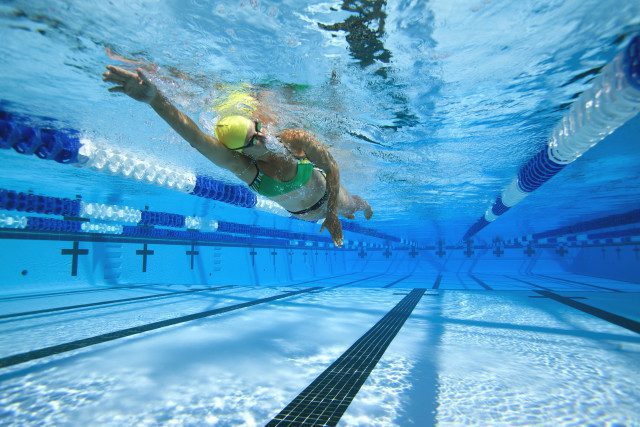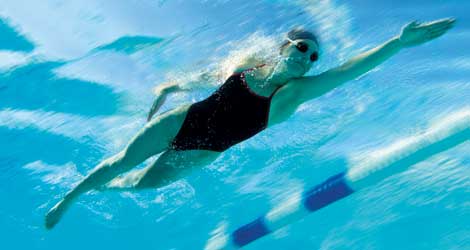Workout Wednesday: Swimming stamina, speed and strength

Triathletes with weaker swimming ability can find new motivation for swim training knowing that more swim fitness will also improve their bike and run splits. If the swim legs takes less energy, you set yourself up for a stronger ride and run during races. Swim stamina, speed, and strength all contribute to swim fitness, so a good training plan includes workouts to address all three fitness components. Here’s how these three types of swim workouts improve your fitness and how to add them to your swim training.
Stamina Workouts
Stamina means endurance, which is the ability to swim for a long time without getting tired. This is the main component of all triathlon training as ultimately even the short distance races are endurance events. This is the first place for all triathletes to start.
Before consider working on your speed or your strength, you need to be able to comfortably swim continuously for a minimum distance determined by the race you are planning. Broken distance sets are a good way to introduce yourself to continuous swimming. Incorporate short rest breaks and progressively reduce the interval distance to make it easier to maintain your pace and build your endurance.
Stamina Main Set
400 swim :30 rest
2 x 200 swim :20 rest between
4 x 100 swim :15 rest between
8 x 50 swim :10 between
More experienced, stronger swimmers could start this workout with a longer continuous interval of 1000m and break it down similar to the suggested workout above, or do the same workout at their continuous race pace with even shorter rest breaks. Athletes just learning to swim can make this set half the distance for each set of intervals but keep the rest the same.
Strength
To get stronger for swimming you need build strength in the muscles that propel you through the water. Build strength through resistance training with weights or band work as well as and specific sets that train force against the water. I suggest some resistance training exercises in a video I made about shoulder exercises here. Pool-based strength equipment for swimming includes pull buoys, bands, parachutes, elastics, drag suits and paddles.
Identifying and addressing any shoulder or rotator cuff weakness and technical deficiencies in your stroke is important before you start this kind of training to avoid injury. Poor biomechanics can lead to injury. Be very careful using paddles as using paddles that are too large or using them too much can also lead to injury.
Strength sets without paddles are safest for beginners and technically inefficient swimmers. Although all swimmers benefit from shoulder exercises, they are particularly helpful for beginners who need to work on shoulder mobility and strength when learning to swim.
Strength Main Set
4 x 400m with pull buoy, 20 – 30 seconds rest between each 400
More advanced swimmers can add a band/paddles or use only a band/paddle without the buoy for part of the set. As your strength and fitness improves you can add more volume to the set, moving towards 10 x 400 for athletes racing half and full distance race.
This set should be performed at race pace effort at strong, even split pace. The buoy/paddles challenges the upper body strength by adding resistance to each pull.
Speed
Swimming fast in open water is achieved through high arm turnover, a different technique than is applied in pool swimming. Swimming arm cadence is a skill that is optimized with training, just as it is for cycling and running. The fastest open water swimmers use a turnover of 95-100 strokes per minute.
The best training for arm turnover speed is short swim intervals with maximum effort/high turnover combined with adequate rest to repeat with good quality. Breaking a speed-focused main set up into a group smaller sets with added rest helps maintain swim quality. Volume for speed sets is generally lower than endurance or strength sets because they are performed at such high quality. You may find it helpful to use a metronome (like a tempo trainer) for pacing but it isn’t mandatory. Maximum effort is as fast as you can go.
Speed Main Set
3 sets:
8 x 25 all out/fast turnover (take at least half the time it takes you to swim 25m as rest)
1 minute rest between sets of 8
Advanced swimmers can do this set using hand paddles to increase the power building benefits of these sets as long as they don’t affect turnover. Athletes with more fitness can do some easy, recovery swimming between sets rather than taking complete rest.

